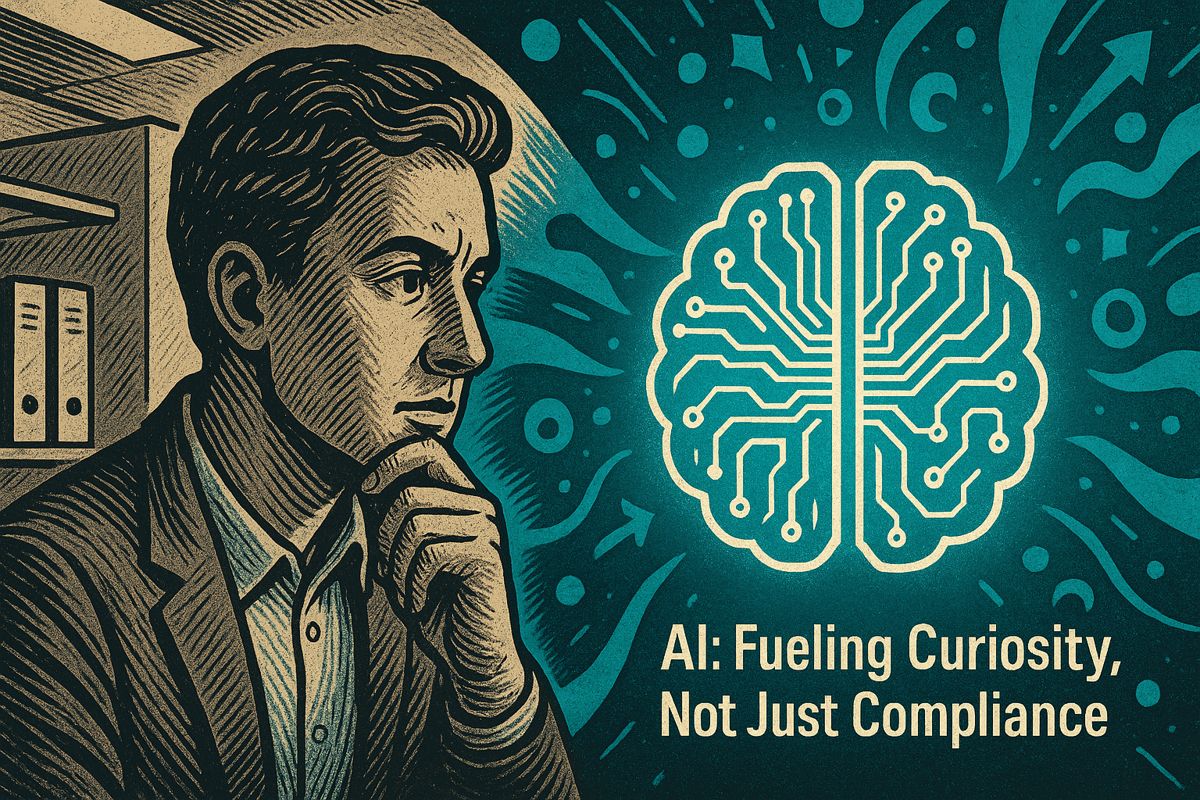The growing impact of AI on code is reshaping software development from a theoretical concept into a daily reality for engineers. As developers grapple with this shift, they find themselves moving from writing code manually to orchestrating AI-driven tools. A new professional hierarchy is emerging, where developers who master AI collaboration gain significant leverage, while those who stick to traditional methods face obsolescence.
From Code Author to AI Orchestrator
AI is fundamentally changing the developer’s role from a solitary coder to a system orchestrator. Instead of writing every line, programmers now focus on high-level design, prompt engineering, and critically reviewing AI-generated code to ensure it meets quality, security, and business requirements before integration.
Large language models (LLMs) are now integral to the software lifecycle. A 2025 systematic literature review confirms their widespread use in coding, testing, and design, noting both productivity gains and risks of cognitive offloading. This trend is quantified by the 2025 Stack Overflow Developer Survey, which found that 82% of developers use OpenAI models and that AI now generates 41% of all code.
As AI copilots take over routine coding, the essential skills for developers are pivoting. Core competencies now include prompt engineering, critical code review, and coordinating multiple AI agents, alongside traditional skills. The modern developer’s role is less about writing every note and more about conducting an orchestra of automated tools, ensuring the final output is secure, correct, and maintainable.
Quality Risks and the Rise of “AI Slop”
This increased velocity from AI comes with a significant risk: a rise in low-quality contributions. Open-source communities have coined the term “AI slop” to describe the influx of auto-generated pull requests and documentation that add more noise than value. An IBM Octoverse analysis confirms this trend, revealing that maintainers spend significant extra time filtering poor AI suggestions, which hurts both project velocity and team morale.
To combat this, leading development teams are implementing layered quality controls:
– Automated analysis: Using static analysis tools specifically tuned to flag common AI-generated errors, like hallucinated logic or duplicated code.
– Provenance tracking: Requiring mandatory tags in commit messages that log the prompt and model used, ensuring traceability.
– Scoped changes: Enforcing small, focused pull requests to limit the potential blast radius of faulty AI-generated code.
Reclaiming Influence in Design Conversations
Beyond the code editor, the true challenge for developers is maintaining strategic influence during the design phase. While an AI can generate an architecture diagram, it cannot grasp crucial business context like team skills, long-term product roadmaps, or complex regulatory constraints. This is where human judgment remains irreplaceable. A SEI perspective from Carnegie Mellon’s Software Engineering Institute suggests a future where human ‘supervisors’ guide AI ‘students’ by setting clear objectives and guardrails.
Experienced engineers secure their value by translating abstract business goals and ethical considerations into effective prompts that guide AI models. By shaping the AI’s input, they retain the strategic voice that leadership and clients rely on for sound decision-making.
Practical Upskilling Paths
For developers wondering how to adapt, industry surveys point to three high-value upskilling areas:
1. Advanced Prompt Engineering: Mastering patterns that reduce model hallucination and produce more deterministic, reliable code.
2. AI-Augmented Security Reviews: Learning to use AI-powered scanners and custom rule sets to secure AI-generated code.
3. Data Engineering Fundamentals: Understanding the principles of clean data pipelines for training and evaluating models effectively.
Looking ahead, it’s projected that 80% of engineers will complete formal AI upskilling by 2027. Employers are already prioritizing candidates with certifications in these areas, as they serve as a crucial safeguard against productivity metrics that hide accumulating technical debt.
The Keyword Revisited
In the current hiring market, managers are actively seeking developers who can demonstrate their ability to navigate this new AI-driven landscape. Candidates who can articulate their experience – including experiments, failures, and successes – with AI assistants are at a distinct advantage. Ultimately, influence and career security belong to those who treat AI as a powerful collaborator but remain fully accountable for the final product.
How is AI changing what it means to be a developer in 2025?
In 2025, being a developer is less about hand-crafting every line of code and more about orchestrating AI agents. The 2025 Stack Overflow Developer Survey shows that 82% of developers already use AI models, turning tools like GitHub Copilot into daily collaborators. The focus of engineering work is shifting to:
– Prompting, Reviewing, and Merging: Spending more time on validation and integration than on initial code creation.
– Orchestrating AI Workflows: Coordinating specialized models for tasks like testing, documentation, and bug fixing.
– Focusing on Upstream Decisions: Shifting effort toward high-level architecture, system design, and risk analysis.
This evolution creates a new developer identity: the “AI Conductor.” Teams embracing this shift can achieve faster delivery cycles, while those resisting it risk becoming mere debuggers for inefficient machine output.
What exactly is “AI slop” and why should CTOs worry?
“AI slop” refers to the low-quality, often incorrect, and unmaintainable code generated by LLMs from vague or context-poor prompts. This is a critical concern for CTOs because it creates significant drag on development teams. The IBM Octoverse report, for example, found that open-source maintainers are overwhelmed by low-value, auto-generated pull requests that add noise instead of value. The hidden cost is senior engineering time spent debugging hallucinated dependencies and security flaws, which ultimately negates any perceived velocity gains.
Which practical guard-rails keep AI-generated code trustworthy?
To scale AI code generation successfully, organizations must implement robust guardrails. Three controls are essential for maintaining trust and quality:
1. Automated Quality Gates: All AI suggestions must automatically pass style, security, and test coverage scans before being presented for human review.
2. Strict Traceability: Commits must include provenance logs detailing the prompt, model version, and data used to generate the code, ensuring future maintainability.
3. Mandatory Human Oversight: Critical system components (e.g., handling payments, cryptography, or PII) must remain off-limits to unsupervised AI agents, with senior engineer sign-off required.
How can individual engineers stay indispensable as 41% of code is written by machines?
As AI automates a significant portion of coding (currently 41%), individual engineers can secure their role by focusing on tasks that require deep context and human judgment:
– Master High-Level Design: Invest in skills like domain modeling, threat analysis, and strategic planning, where machines still lack the nuanced understanding of trade-offs.
– Learn the AI Toolchain: Develop expertise in prompting, fine-tuning, and retrieval-augmented generation (RAG) pipelines.
– Emphasize Clear Communication: Differentiate your work through obsessive documentation, such as clear RFCs and decision logs that explain the why behind technical choices.
– Become a Force Multiplier: Mentor junior developers and lead code reviews to turn a team of individuals + AI into a highly effective unit.
With projections showing 80% of engineers will require formal AI upskilling by 2027, building these skills now creates a significant and compounding career advantage.
Where is the industry headed next – will we still need software engineers?
The demand for software engineers is not disappearing but rather polarizing toward higher-level skills. The future landscape will likely feature:
– A decline in junior roles: Entry-level positions focused solely on writing basic code and unit tests will shrink as AI automates these tasks.
– Growth in strategic roles: Demand for senior engineers who can define what to build and why will remain strong, as this requires strategic thinking and business acumen.
– Emergence of new specializations: Roles like Prompt Engineer, AI Safety Reviewer, and Model Ops Engineer will become common, creating opportunities for those who blend domain expertise with AI fluency.
The consensus is clear: the future of software development lies in pairing human creativity with machine-level scale. Engineers who take ownership of problem definition, system design, and final validation will write less code but wield greater influence, remaining central to the success of any technology organization.



















